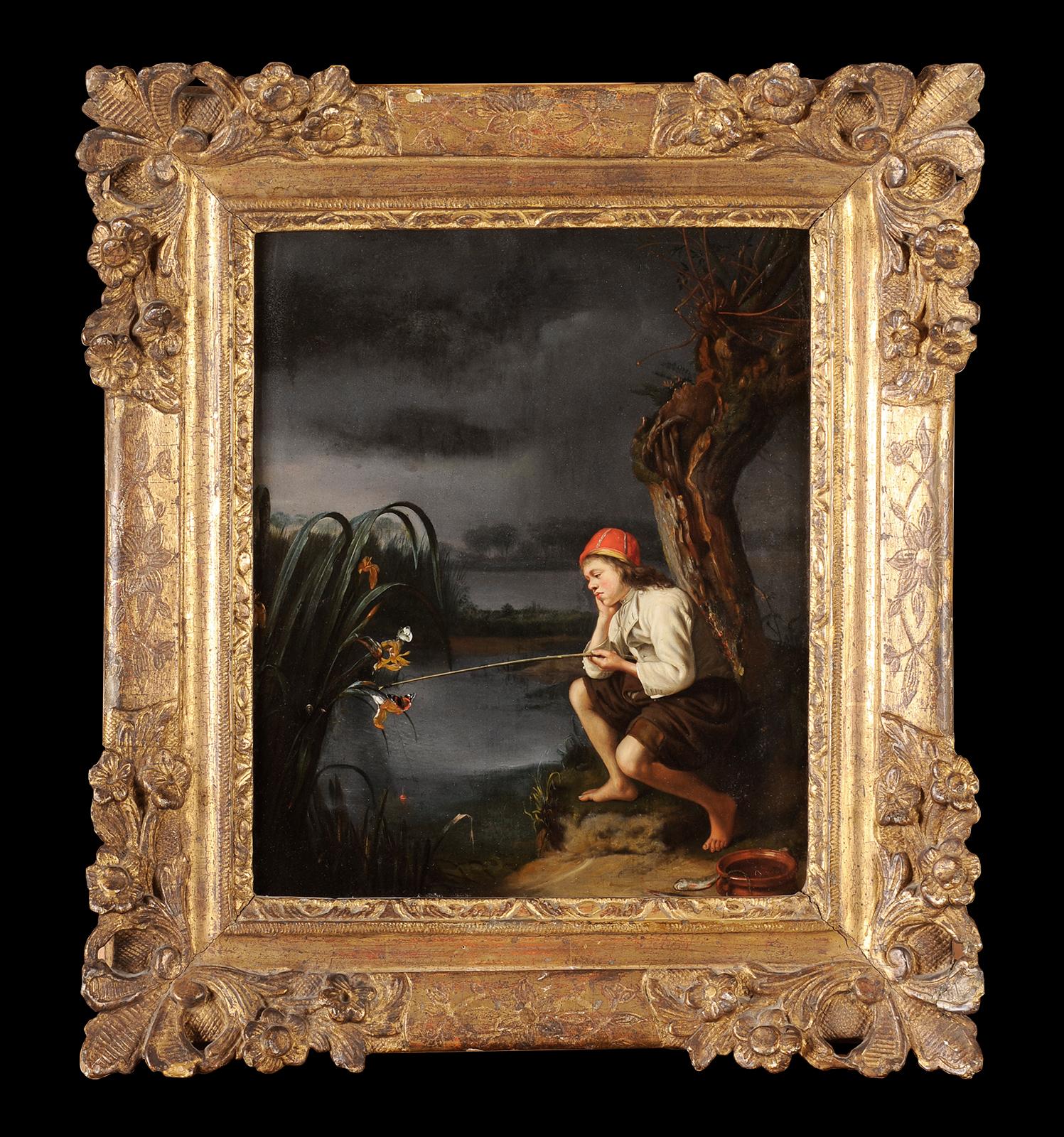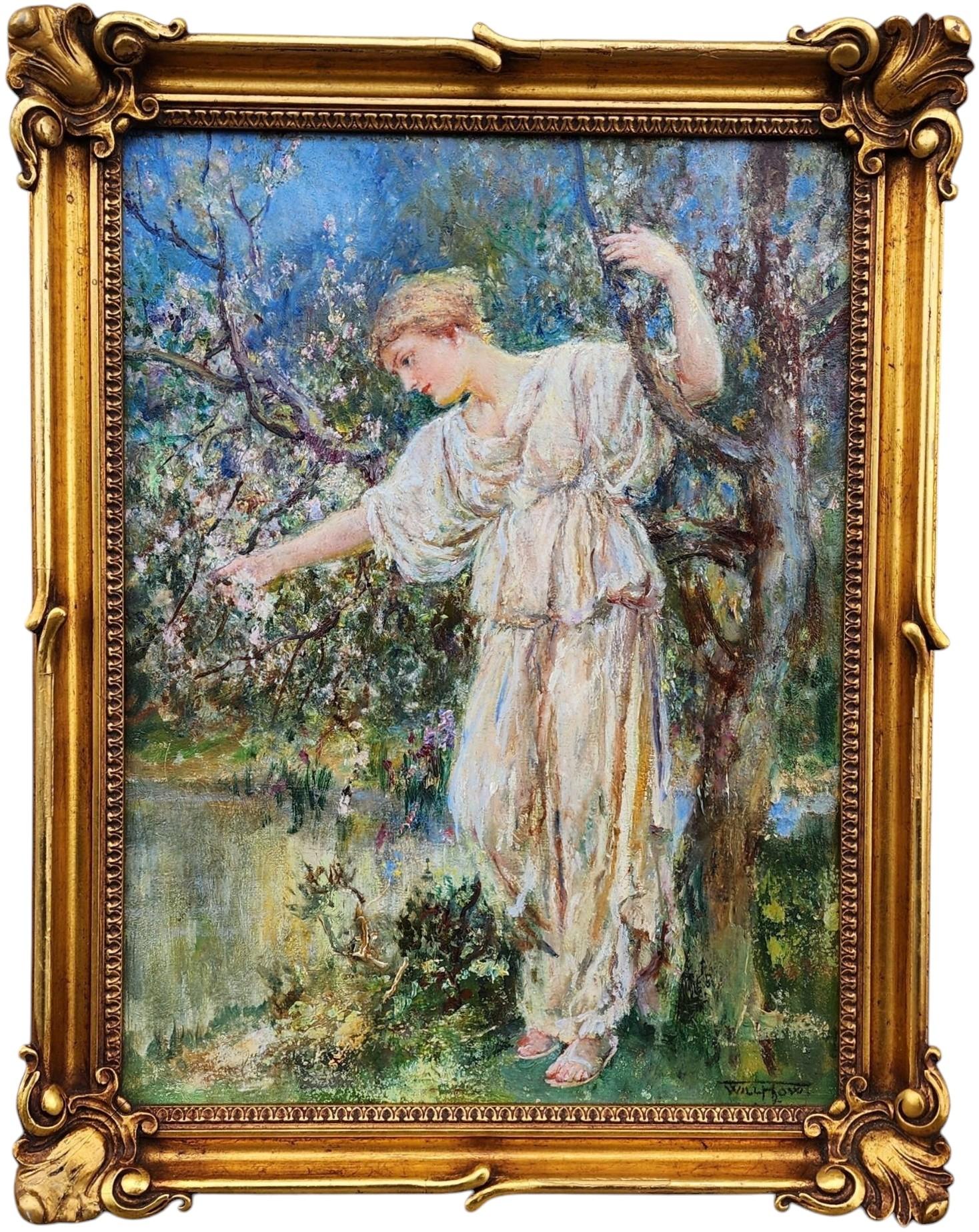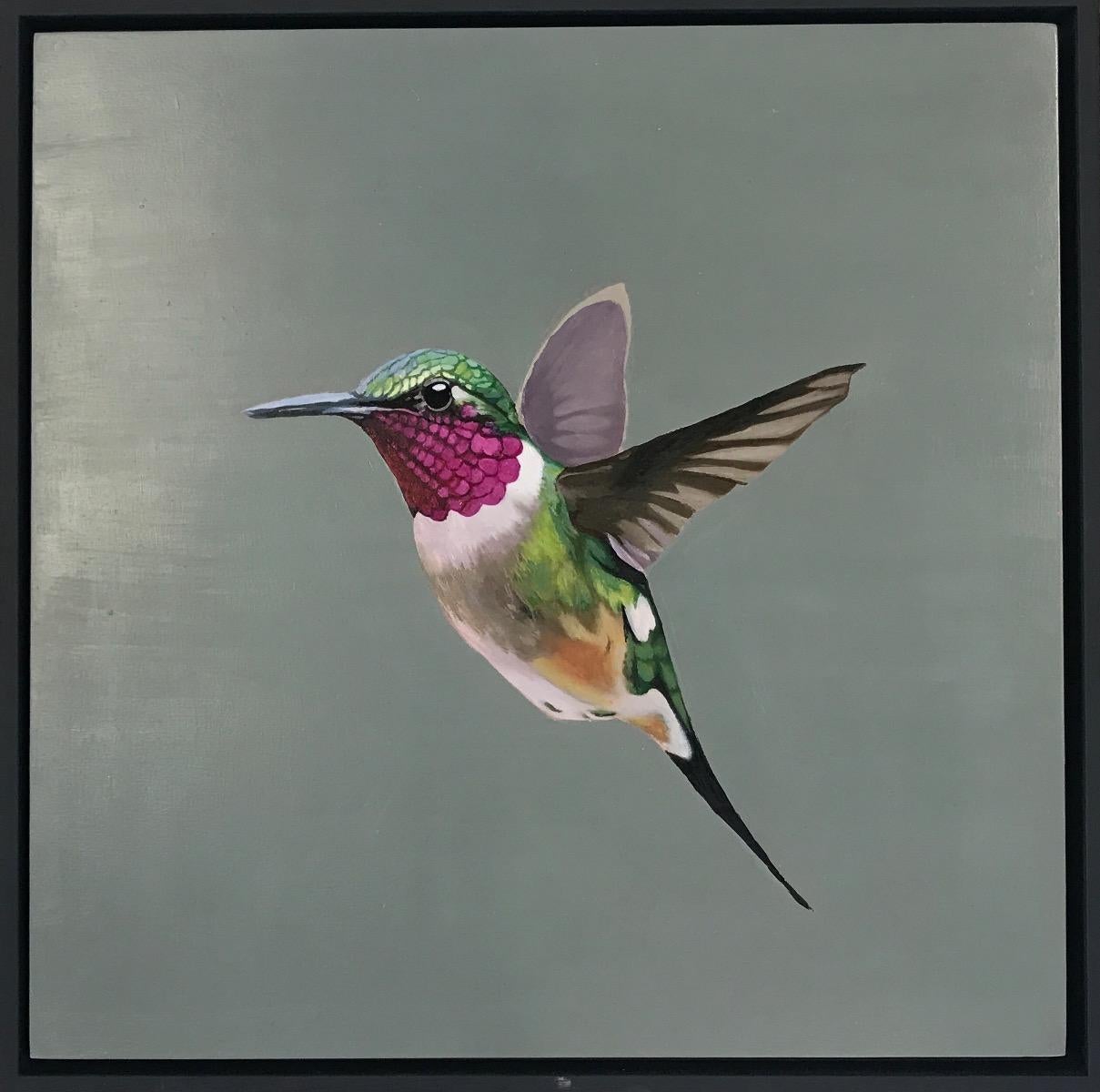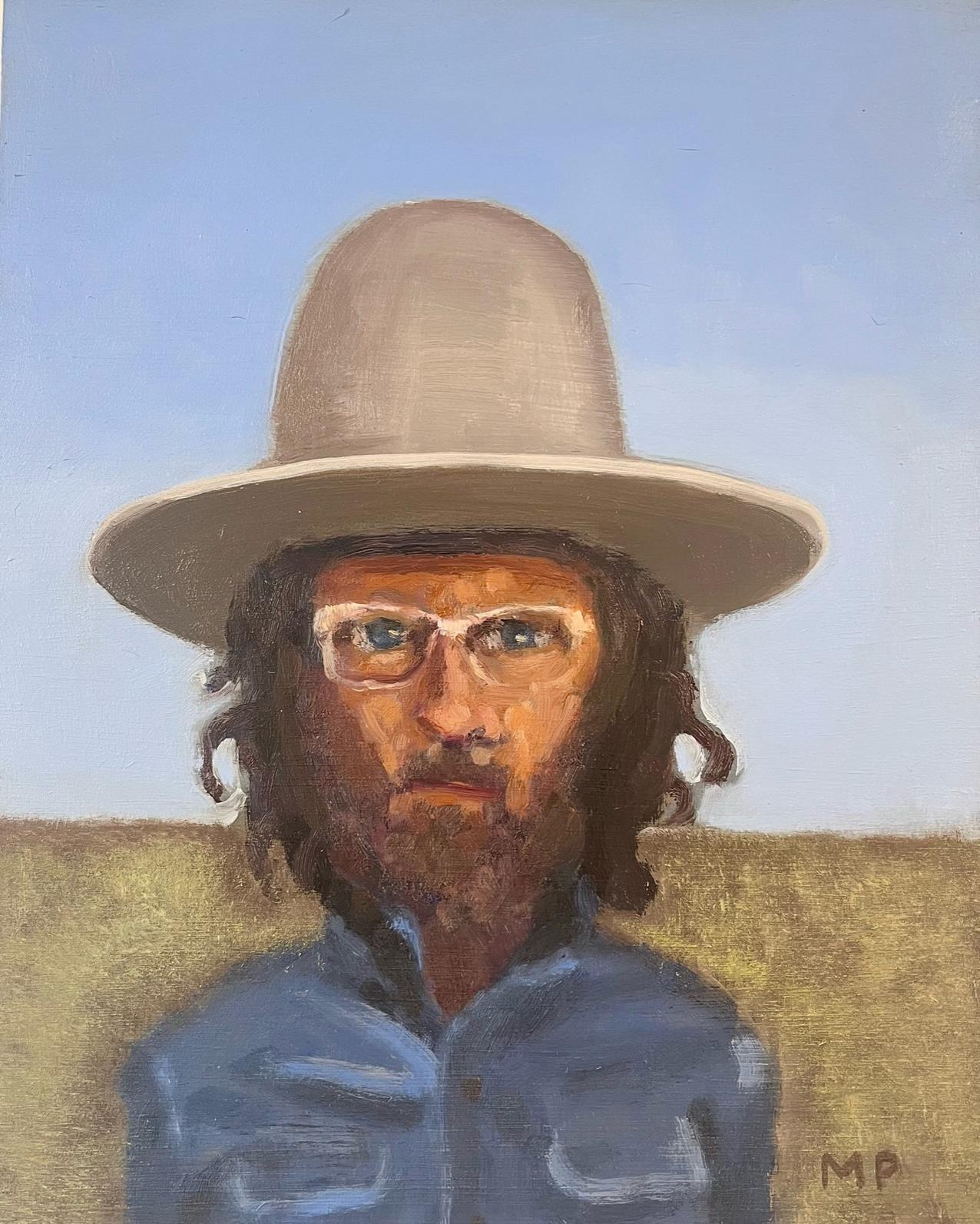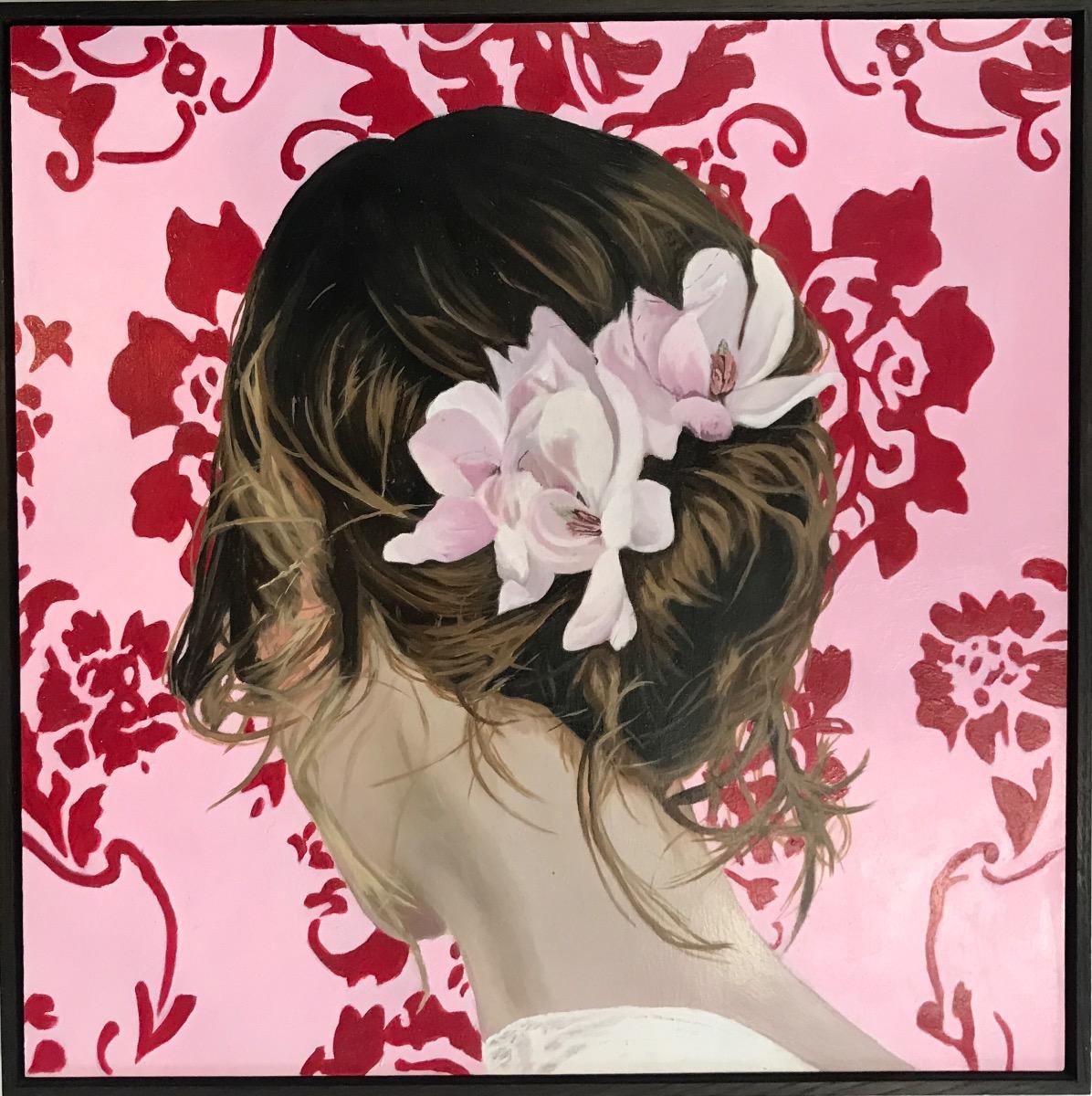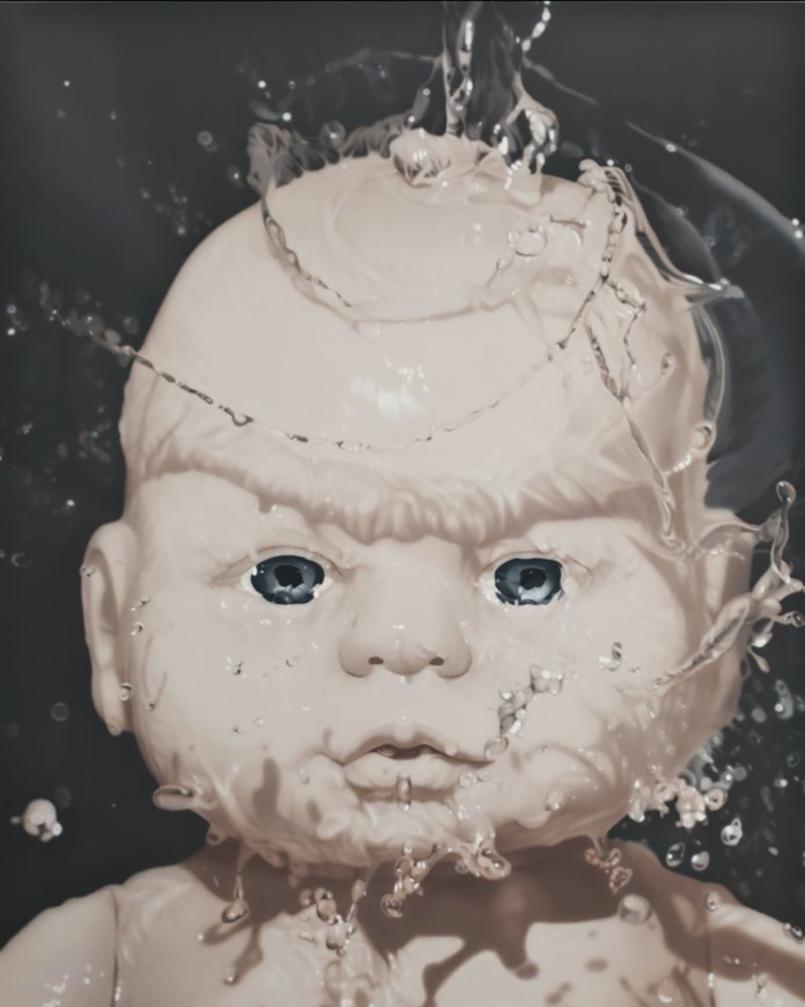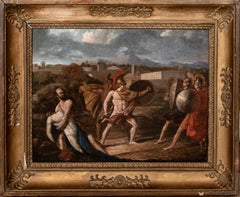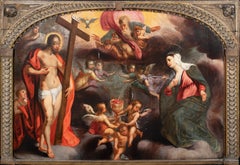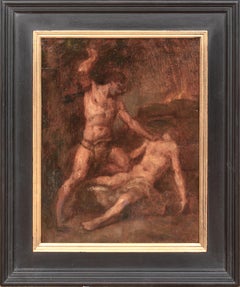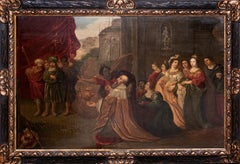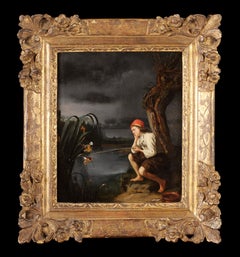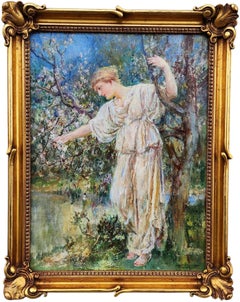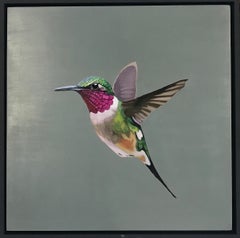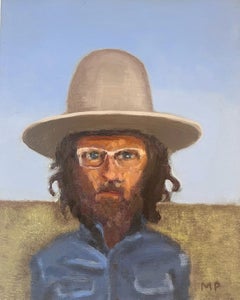Items Similar to Portrait Of King Edward VI (1537-1553) as Prince Of Wales, 16th Century
Want more images or videos?
Request additional images or videos from the seller
1 of 11
UnknownPortrait Of King Edward VI (1537-1553) as Prince Of Wales, 16th Century
About the Item
Portrait Of King Edward VI (1537-1553) as Prince Of Wales, 16th Century
English School - Oil on panel - circa 1547
Large 16th Century portrait of Edward VI as Prince Of Wales, oil on panel. Early and important portrait of the young monarch, son of Henry VIII and Jane Seymour, in anticipation of the crown holding a flower. One of a pair, the other depicting him as King of England & Ireland. Framed. Some losses and panel bowing. We can quote for full restoration.
Provenance: A private collection, UK
Measurements: 37" x 30" framed approx
- Dimensions:Height: 37 in (93.98 cm)Diameter: 30 in (76.2 cm)
- Medium:
- Period:
- Condition:
- Gallery Location:Blackwater, GB
- Reference Number:Seller: 7832951stDibs: LU1577214025062
About the Seller
4.9
Platinum Seller
Premium sellers with a 4.7+ rating and 24-hour response times
Established in 2008
1stDibs seller since 2021
271 sales on 1stDibs
Typical response time: 1 hour
- ShippingRetrieving quote...Shipping from: Blackwater, United Kingdom
- Return Policy
Authenticity Guarantee
In the unlikely event there’s an issue with an item’s authenticity, contact us within 1 year for a full refund. DetailsMoney-Back Guarantee
If your item is not as described, is damaged in transit, or does not arrive, contact us within 7 days for a full refund. Details24-Hour Cancellation
You have a 24-hour grace period in which to reconsider your purchase, with no questions asked.Vetted Professional Sellers
Our world-class sellers must adhere to strict standards for service and quality, maintaining the integrity of our listings.Price-Match Guarantee
If you find that a seller listed the same item for a lower price elsewhere, we’ll match it.Trusted Global Delivery
Our best-in-class carrier network provides specialized shipping options worldwide, including custom delivery.More From This Seller
View AllThe Death Of Patroclus, 18th Century School of Jacques-Louis David (1748-1825)
By Jacques-Louis David
Located in Blackwater, GB
The Death Of Patroclus, 18th Century
School of Jacques-Louis David (1748-1825)
18th Century French Neo-Classical scene of the Death Of Patroclus, oil on panel. Excellent quality an...
Category
18th Century Portrait Paintings
Materials
Oil, Wood Panel
The Blood Of Christ, The Milk Of The Madonna, 16th Century
Located in Blackwater, GB
The Blood Of Christ, The Milk Of The Madonna, 16th Century
circle of Adriaen Isenbrandt (1480-1551)
Huge 16th Century Flemish old Master depiction of...
Category
16th Century Portrait Paintings
Materials
Oil, Wood Panel
$17,347 Sale Price
20% Off
Cain & Abel, 19th Century
Located in Blackwater, GB
Cain & Abel, 19th Century
School of Eugène DELACROIX (1798-1863)
19th century French scene of Cain & Abel, oil panel. Excellent quality and condition biblical scene of the death of...
Category
19th Century Portrait Paintings
Materials
Oil, Wood Panel
$3,794 Sale Price
20% Off
King Solomon Worshipping The Idols, 17th Century FRANS FRANCKEN II (1581-1642)
By Frans Francken II
Located in Blackwater, GB
King Solomon Worshipping The Idols, 17th Century
FRANS FRANCKEN II (1581-1642) - signed sales to $6,000,000
Large 17th Century biblical account of King Solomon worshipping the Idols, oil on panel Frans Francken. Excellent quality and condition Old Testament biblical scene on a cradled panel depicting the Idolatry of Solomon, son and successor of King David. Exceptional detail and would be enhanced with a light clean. Presented in an antique period frame. Signed.
Measurements: 47" x 34" framed approx
Artist Biography
Frans Francken II or the Younger is the third in order of descent in the Francken family tree. Born in 1581, the son of Frans Francken I or the Elder, he was the brother of Thomas, born in 1574, of Hieronymous II, born in 1578 and died in 1623, and of Ambrosius II, the last in line, who died in 1632. Hieronymous II, who died at the age of 56, is only known for his painting Horatius Cocles at Sublicius Bridge. Frans the Younger was initially a pupil of his father, who was then at the height of his career. In his father's studio he imbibed all the teaching of the tradition of Frans Floris. He also spent long periods in Italy, where he familiarised himself in particular with the masters of the Venetian school. Such study in situ enabled him to break away from the well-worn methods of Flemish Italianism, as practised by his father and uncles. It is conceivable that the young artist met Rubens, who was in Italy at the time.
In 1605, at the age of 24, on his return to Antwerp, Frans the Younger became a master in the Antwerp Guild of St Luke. In 1607 he married Elisabeth Placquet in Antwerp. Three sons and eight daughters resulted from this marriage. His children made up the fourth generation in the dynasty. Better known are Frans III (1607-1667) and Hieronymus, born in 1611. The latter had a son, Constantinus (1661-1717), who marks the end of the line. The family of Francken painters runs from 1520 to 1717.
As one of the most active masters in Antwerp, Frans II was appointed dean of the guild in 1614. He was also a member of the Violette, a major literary association, for which he painted an award-winning symbolic coat of arms. He was intimate with the most celebrated artists, in particular van Dyck, who executed a very fine portrait of him, judging by the engraving by Willem Hondius and Pieter de Jode. It is also likely that he was on familiar terms with Rubens who was his near contemporary. He died in Antwerp on 6 May 1642 at the age of 61, outlived by both Rubens and van Dyck.
The first securely dated work of Frans the Younger is Christ on the Cross from the gallery in Vienna, painted in 1606. Witches' Sabbath (Vienna) and The Works of Mercy (Antwerp) are dated 1607 and 1608 respectively. In these two latter works the painter proves himself adept at painting figures and allegorical scenes. The Works of Mercy represents various groups of figures, symbolising the different activities inspired by Christian charity. Paupers and beggars occupy the foreground, the ensemble being dominated by the figure of the glorious Christ.
While Frans the Younger cannot be compared with the masters of this great first generation of Antwerp, which was illuminated and steered by the genius of Rubens, he does nevertheless merit attention. He succeeded in developing and bringing into fashion an anecdotal genre on a more modest scale, elements of which were to inform the last representatives of the Francken family for over a century. Frans the Younger was undoubtedly the most talented draughtsman in the family. While his art may be criticised for its lack of grandeur and solemnity, the execution shows great talent. His brush stroke was vigorous and his imagination, albeit restrained, was brilliant. His interest in tonal values was highlighted by his study and appreciation of his remarkable contemporaries. This enabled him to carry out landscapes and also fleshy figures, which made him altogether worthy of the brilliant period to which he belonged. While detail certainly preoccupied him, he treated it with intelligence and even esprit, as witnessed in The Parable of the Prodigal Son and A Prince's Visit to the Treasury of a Church(both in the Louvre). The scenes painted in grisaille, which surround the principal motif of the Prodigal Son, are characteristic of his style. He excelled in painting jewellery, ornaments, and textiles with shot silk effects. A large number of his figures inhabit the neutral backgrounds of the interiors of apartments and galleries. He carried out such work not only under his own auspices, but also for other artists, such as Peeter Neeffs, van Bassen, Josse de Momper...
Category
17th Century Portrait Paintings
Materials
Oil, Wood Panel
$16,263 Sale Price
20% Off
Coronation Portrait Of King Edward VI (1537-1553) as King Of England & Ireland
Located in Blackwater, GB
Coronation Portrait Of King Edward VI (1537-1553) as King Of England & Ireland, 16th Century
English School - Oil on panel - circa 1547
Large 16th Century Coronation portrait of Edward VI as King Of England & Ireland, oil on panel. Early and important portrait...
Category
16th Century Portrait Paintings
Materials
Oil, Wood Panel
$10,733 Sale Price
20% Off
The Return Of King Agamemnon, 16th Century Frans I FLORIS (1516-1570) Trojan War
Located in Blackwater, GB
The Return Of King Agamemnon, 16th Century
circle of Frans I FLORIS (1516-1570)
Large 16th Century Flemish Old Master depicting the return of King Agamemnon from the Trojan War, o...
Category
16th Century Portrait Paintings
Materials
Oil, Wood Panel
$12,452 Sale Price
20% Off
You May Also Like
Portrait of a young fisherman in a landscape
Located in BELEYMAS, FR
Attributed to Godfried SCHALKEN
(Made 1643 – The Hague 1706)
Young fischer
Oil on panel in one board
H. 32.5 cm; L. 25.5 cm
Around 1670/75
Related works:
- Autograph version with nu...
Category
1670s Dutch School Portrait Paintings
Materials
Oil, Wood Panel
Springtime, Allegorical Painting. Allegory, Woman with Spring Flower Blossoms
Located in Grand Rapids, MI
Will Hicok Low (American, 1853 - 1932)
Will H. Low (lower, right)
" Springtime ", circa 1900 - 1910
Oil on Mahogany Panel
16 1/6" x 12"
Housed in a Period 1 3/4" Ornamented Fra...
Category
Early 20th Century Portrait Paintings
Materials
Oil, Wood Panel
Single Hummingbird, Original Painting, Bird, Animal, Nature
Located in Deddington, GB
Single hummingbird, oil on panel by Angela Smith Hummingbird on a green background, perfectly painted with lots of detail.
ADDITIONAL INFORMATION:
Singl...
Category
2010s Contemporary Portrait Paintings
Materials
Oil, Wood Panel
Marfa Cowboy
By Mike Piggott
Located in Bozeman, MT
Piggott finds resonance and beauty in the familiar. His subjects, anchored in the stuff of the every day, are quietly captured in a moment of time. Each composition speaks to the art...
Category
2010s Contemporary Portrait Paintings
Materials
Oil, Wood Panel
Tuesday's Girl (Sakura), Original Painting, Girl, Portrait, Floral, Woman, Pink
Located in Deddington, GB
Original painting by Angela Smith showing back of girl's head.
A portrayal of young girl with brown hair tied back by pink flowers. Surrounded by a vibr...
Category
2010s Contemporary Portrait Paintings
Materials
Oil, Wood Panel
Ocean without a Shore (Black)
By Do Byung-Kyu
Located in New York, NY
The medium of choice for Do Byung-Kyu, born in Cheonan, Korea, is dolls: they are both his conceptions and his physical expression. At the same time dolls are also the perfect tool for communicating the artist’s inner self. Expressing himself by means of dolls liberates Do from the restrictions of the mundane world. By embodying in the form of dolls his actions and thoughts, dreams and desires, and even the instincts lying in the depths of the subconscious, he transcends the secular boundaries. Dolls are his alter ego, his other self that he can construct precisely the way he wants. Sublimating the experiences and memories from his youth into various subjects of desire, Do uses dolls to paint a descriptive picture of the ambiguous feelings of contradictions from his childhood when he would abuse and kill a plaything, for example a frog, then bury the body in solemn mourning over its death. These sexual or violent games from his childhood are not likely to be limited to Do’s experiences alone. Most of us can vaguely remember indulging in sadistic acts of sexual love against a doll. Rising above a child’s simple curiosity, it is an intuitive game of the senses we play by ourselves. In a number of Do’s paintings, sticky liquid can be observed dripping down a doll’s face. This brings back recollections of the life inside our mothers’ womb where we were also enveloped by mucous waters, like the amniotic fluid. It refuses contact with the anything, and nothing wants to touch it either. The shape of such a mucous liquid is a protective layer sheltering the intrinsic identity and desires of man. It is also a substitution that satisfies the ego’s instincts otherwise suppressed by social norms. The dolls’ eyes...
Category
2010s Contemporary Still-life Paintings
Materials
Wood Panel, Polyurethane, Oil
Price Upon Request
